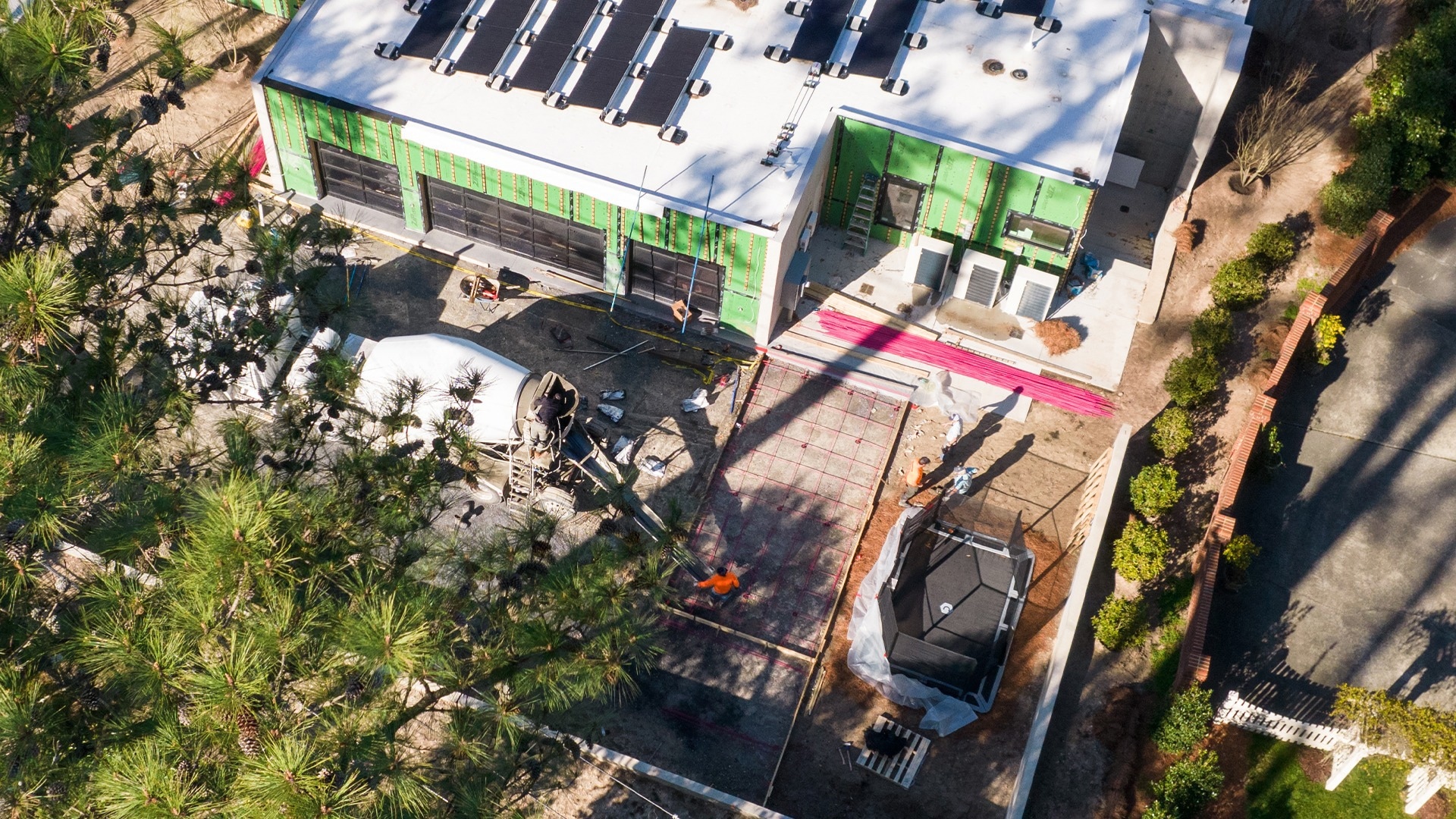AZoM discusses the potential for the use of composites in the construction sector with Casey Ingle from Owens Corning Composites Building Elements. Owens Corning will be exhibiting at JEC World - The Leading International Composites Trade Show later this April 2023.
Please can you introduce yourself and your professional background?
I'm Casey Ingle, the Strategic Marketing Director of Owens Corning Composites Building Elements. I’m in my eighth year at Owens Corning. My degrees are in advertising and psychology, which comes in handy when my job is to convince the market that composite and fiberglass materials can be better than traditional materials in building and construction.
Owens Corning offers solutions in roofing and insulation but also creates innovative composite materials for several industrial sectors. Could you describe some of the composites you offer?
As an enterprise, Owens Corning has, for more than 80 years, been the global leader in building materials. If you think about it, material conversion has driven this company from our inception; before fiberglass, most insulation was based on horsehair or wool, so we’ve been working on using materials science to improve how people live and work for eight decades.
Owens Corning Composites plays in multiple areas. Glass reinforcements (single and multi-end roving) form not just the core of our business but directly support our other business areas as the base of our wind industry products (materials for longer lasting and more durable wind turbine blades). We produce nonwoven mat products for use in roofing, ceiling veils, and gypsum products, and our newest business, which we call Building Elements – these are products that move more directly “downstream,” offering better solutions to end-use customers, like structural lumber, composite rebar, and decking.

Image Credit: Owens Corning
We are bullish on the future because global trends favor the areas in which we’ve chosen to focus. The demand for better structures has never been higher – greener materials, higher durability, more resistance to the elements, better aesthetics… these are all in high demand, and this is where Owens Corning plays through our strong focus on building and construction across the whole of the company. We also recognize the increased demand for renewable energy and are excited about the potential of wind for strong growth, especially in Europe.
What makes your composites stand out from competitors?
Let’s start with Owens Corning’s global expertise and experience in building and construction. While we’re talking about Composites, don’t forget that thanks to the whole of OC and our insulation and roofing businesses, we know and understand how things are built; there’s a long history of understanding materials science and engineering materials substitutions, from insulation to how shingles are made to even how space suits were produced. We’re not new to seeing an existing product and thinking, “how could glass make this better?”
That enterprise connection and our longevity give a significant advantage to both Owens Corning and our customers. We’re globally connected to our partners and different ecosystems; our size means that we can scale quickly to swarm to an opportunity, but our approach means that we enter these opportunities looking to rapidly customize solutions with our partners. Further, we have a world-class Science & Technology research team that’s always working on continuous innovation – both materials advancement and process innovation across the enterprise.
There are more than a few places where you can go to get cheap glass, if that’s what you’re looking for. But if you’re looking for a supplier with high-quality glass, the experience and expertise to partner with you in innovation, to scale together rapidly, and be just as invested in and committed to your innovation and success as you are… Owens Corning stands out for those reasons.
You will be conducting a talk on the use of composites in construction at JEC – The Leading International Composites Show this April. How significant are composite innovations in the building sector?
The opportunity for composites in building and construction is massive. Take the rebar industry alone – it was valued in 2021 at around $260B USD and, by some estimates, could grow to up to $490B by 2030. In 2021, composite rebar represented about 2% of the global market. If the composites industry could bump that number to 10% by the end of the decade, that takes the market for composite rebar from around $5B in 2021 to potentially up to about $49B ten years later. Think about it: if building and construction grow at that multiplier, that industry alone creates enough demand for all glass fiber produced anywhere in the world. So that’s pretty significant!

Image Credit: Owens Corning
I talked earlier about market trends driving improvements in acoustics, aesthetics, mold resistance, and fire and smoke resistance. Well, nonwoven glass veils go into gypsum, ceiling, and floors. Composite innovation and glass fiber composite have always played a key transformative and differentiating role across the entire building portfolio, from shingles to walls to floors.
How can the inclusion of composites in construction make building design more sustainable?
First of all, a more sustainable future is the whole world’s business. There’s literally nothing more important that we can do. You can’t build a sustainable tomorrow with yesterday’s materials. We like to say at Owens Corning that this is how we build now: longer-lasting, more durable concrete structures that don’t have to be repaired as often; lighter, easier-to-handle materials that improve safety and time on jobs, and allow for more product on trucks – which means fewer trucks on the road.
When you can design a building knowing that you’re not going to have to repair or replace structural elements as often and that it will be a cleaner build from the beginning of the process due to the materials you use, it frees up whole new opportunities in building design. In the end, it comes down to lighter weight, lower lifetime costs, greater durability, and a lower carbon footprint over the life of the product.
What other key industries are making use of novel composite materials?
The composites industry has long served industries involved in transportation of some kind, be it marine, automotive, or industrial transport, and there are strong composite applications in those industries. But an ecosystem I like to think about is the full energy delivery spectrum. I talked briefly about composite wind blades and the difference they can make in renewable energy, being cheaper than carbon fiber. But think about all the energy delivery elements once power is generated. How much impact could we have if poles for energy wires were made of composite glass and not wood? Composite poles are stronger than wood, more resistant to wind and rot, and lighter than wood… there’s an entire opportunity to consider converting poles in the energy industry to composite.
As I’ve said, a more sustainable future is everybody’s business; we in the industry have accountability to be wherever the world plays to make things better through material substitution. Making the world a better place isn’t just an Owens Corning value on paper; we aggressively pursue that vision.
Why do you believe in-person trade shows and conferences like JEC are significant to knowledge transfer in this field?
If the past few years have taught us anything, it’s how much value can come from connecting in person. Business relationships are strengthened. Ideas get exchanged, both in sessions and in chance conversations on the show floor, and in a time of market uncertainty, that alignment and energy is more important than ever as we navigate conditions that are, needless to say, a bit different than what we’ve experienced in the past two years.

Image Credit: Owens Corning
JEC World is the place where the global composites industry convenes. Having so many of the world’s composites leaders in the same place looking to advance the industry is invaluable.
It is a leadership opportunity for OC in the industry – a place to put flags in the ground for the industry, solicit feedback, and build consensus. The industry has always been involved in all applications, but we’re in a pioneer phase, and it’s important for OC to educate, create connections, and attract new people to the industry.
What is next on the horizon for Owens Corning’s composites division?
We will continue to look deeply into the construction space. We intend to take material conversion even closer to the OC enterprise, seeking out opportunities for material conversion, growing glass fiber, finding new spaces in building and construction, more closely aligning with the Owens Corning enterprise, and leveraging the whole of Owens Corning to be an active participant in building better.
About Casey Ingle
 Casey Ingle is the Strategic Marketing Director, Building Elements for Owens Corning Composites. He is responsible for growing Owens Corning’s share in downstream building applications, and driving material conversion within applications in that space.
Casey Ingle is the Strategic Marketing Director, Building Elements for Owens Corning Composites. He is responsible for growing Owens Corning’s share in downstream building applications, and driving material conversion within applications in that space.
Owens Corning PINKBAR+
Owens Corning: How We Build Now video playlist
Disclaimer: The views expressed here are those of the interviewee and do not necessarily represent the views of AZoM.com Limited (T/A) AZoNetwork, the owner and operator of this website. This disclaimer forms part of the Terms and Conditions of use of this website.